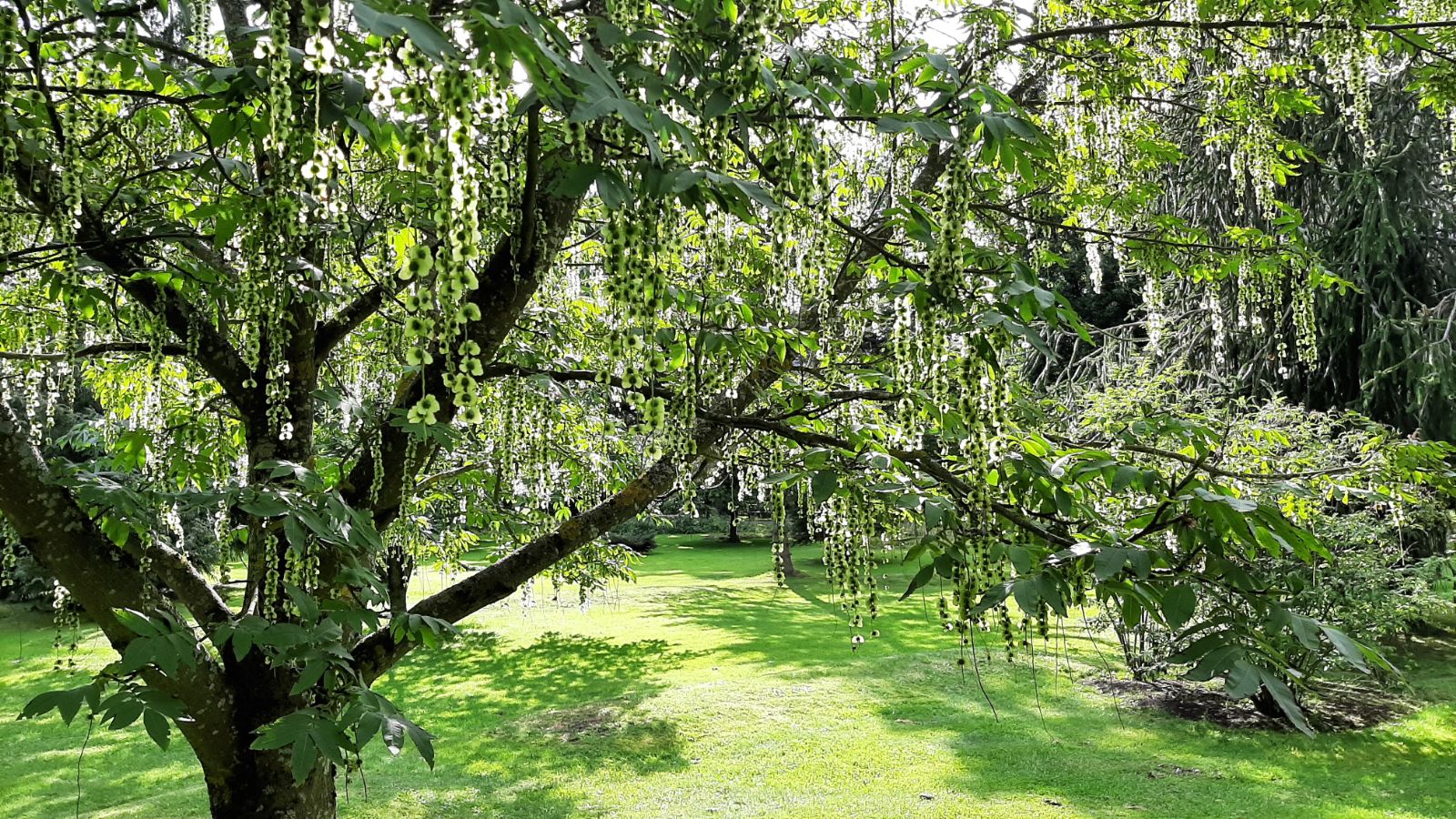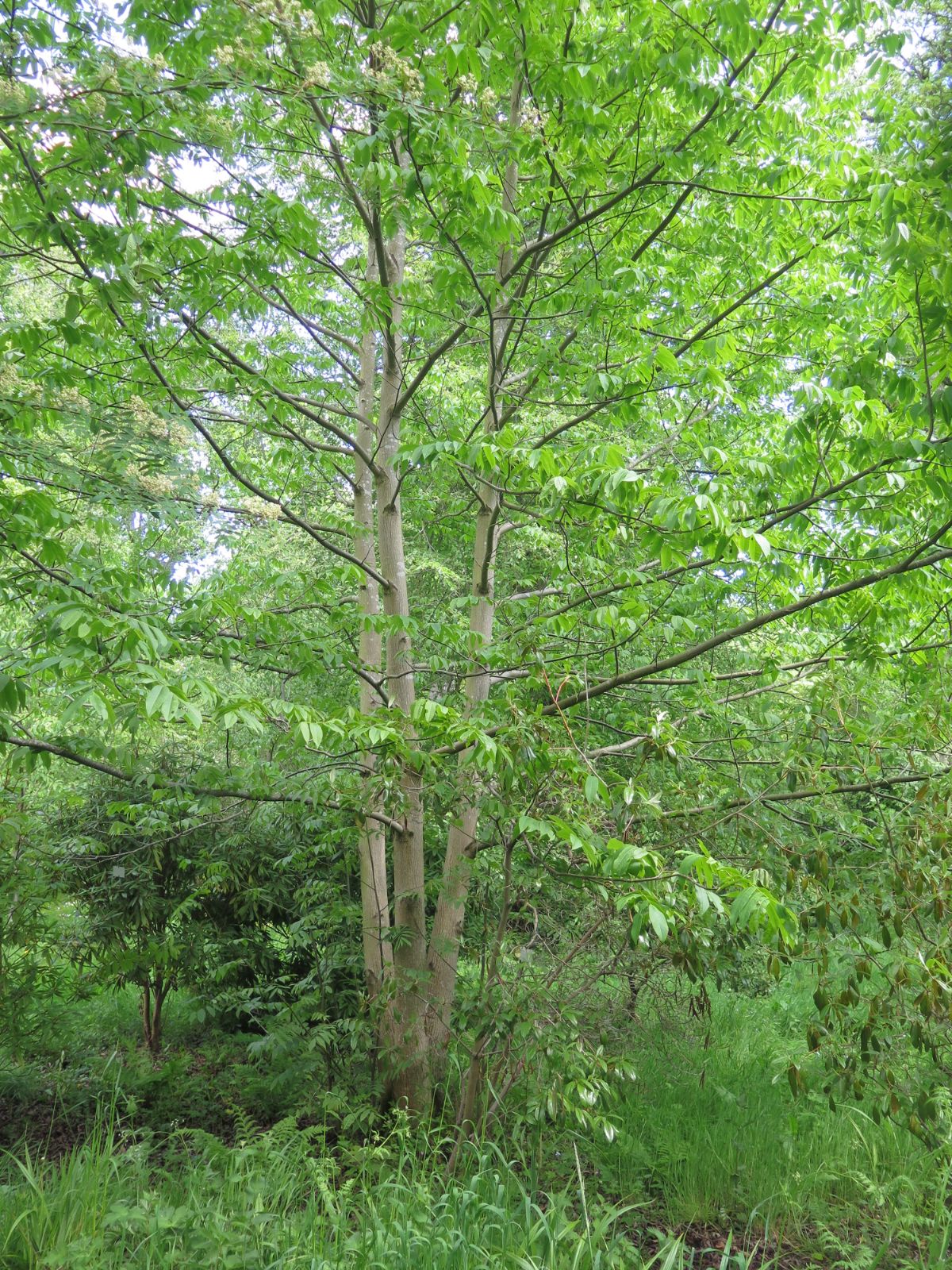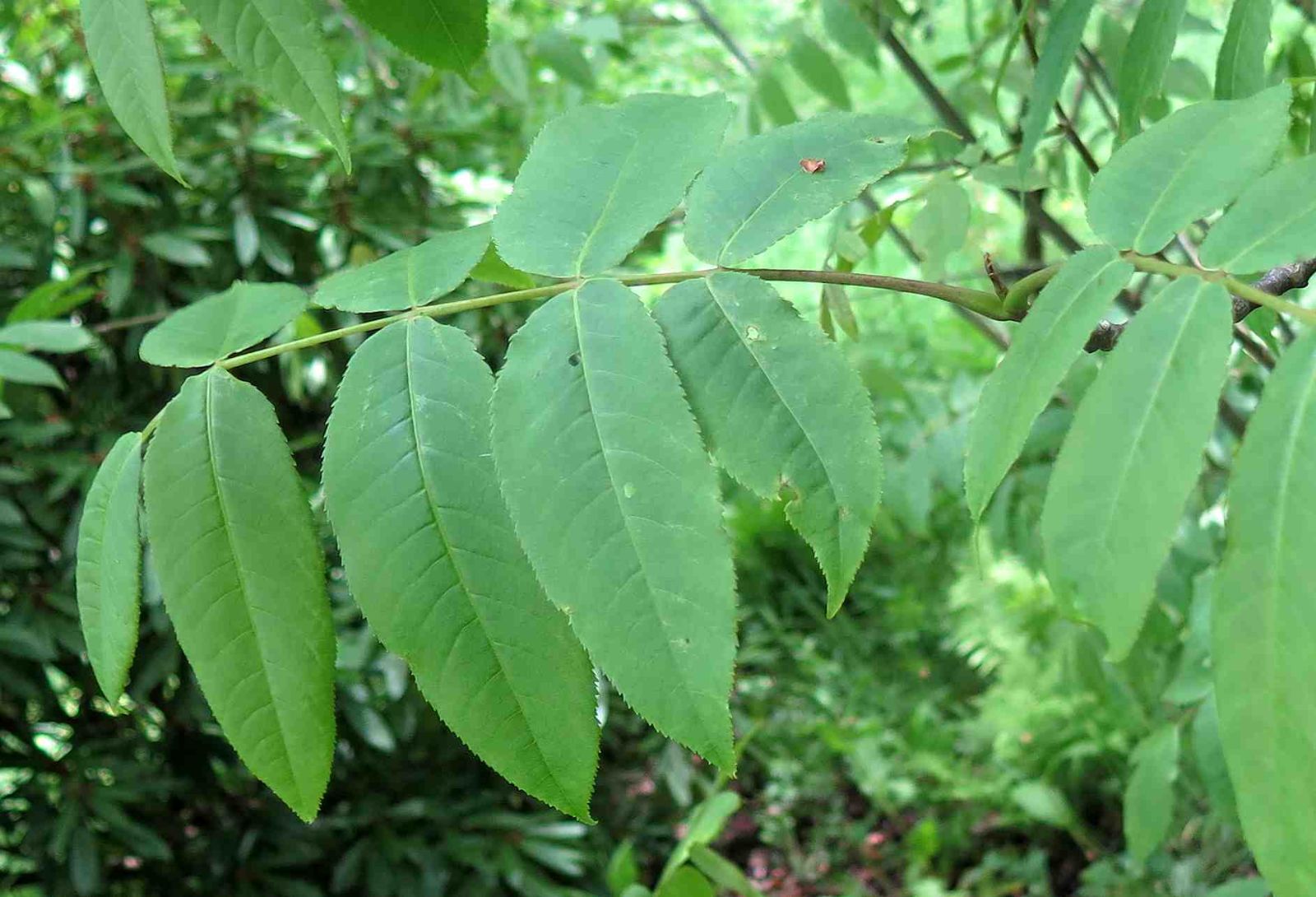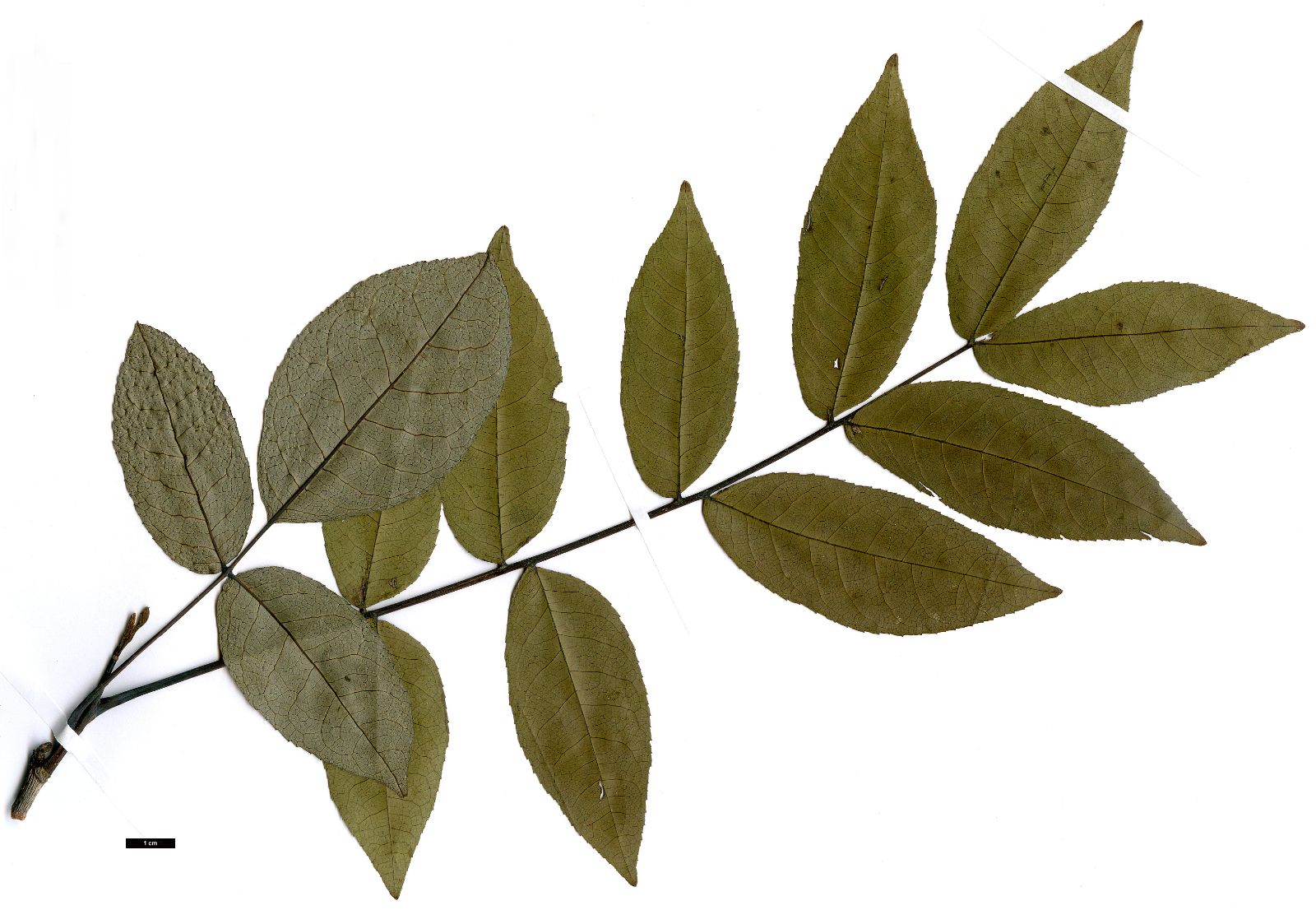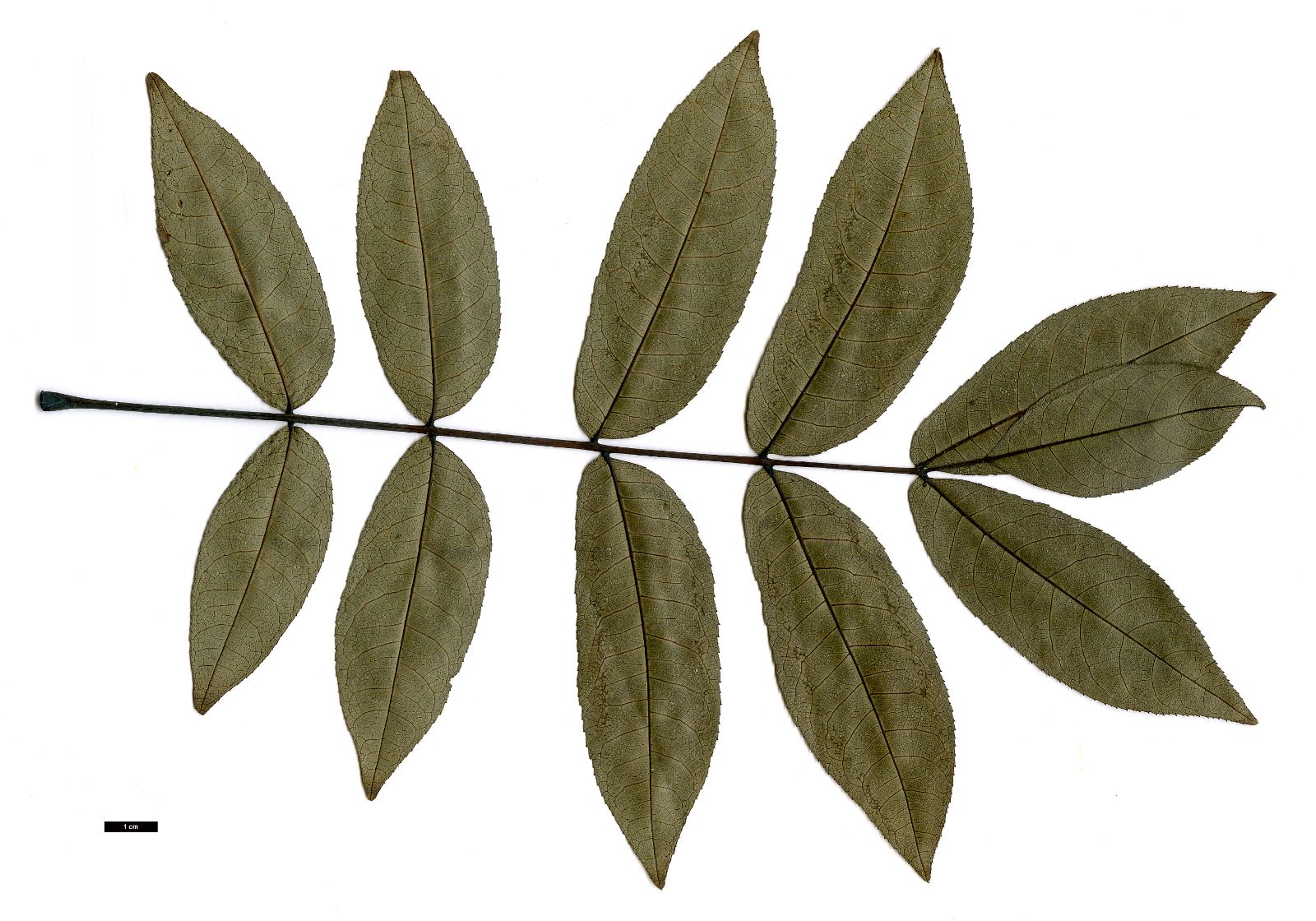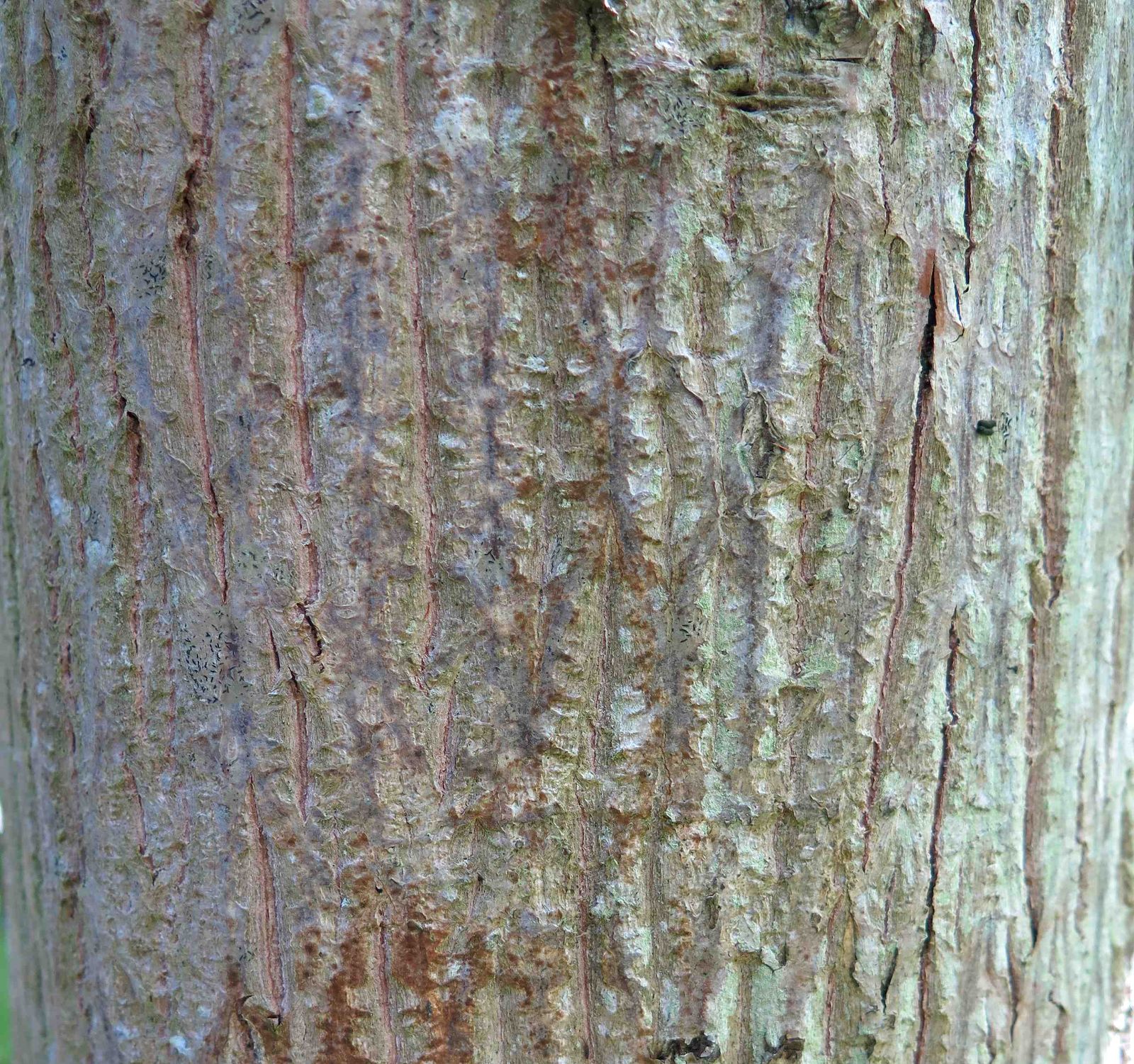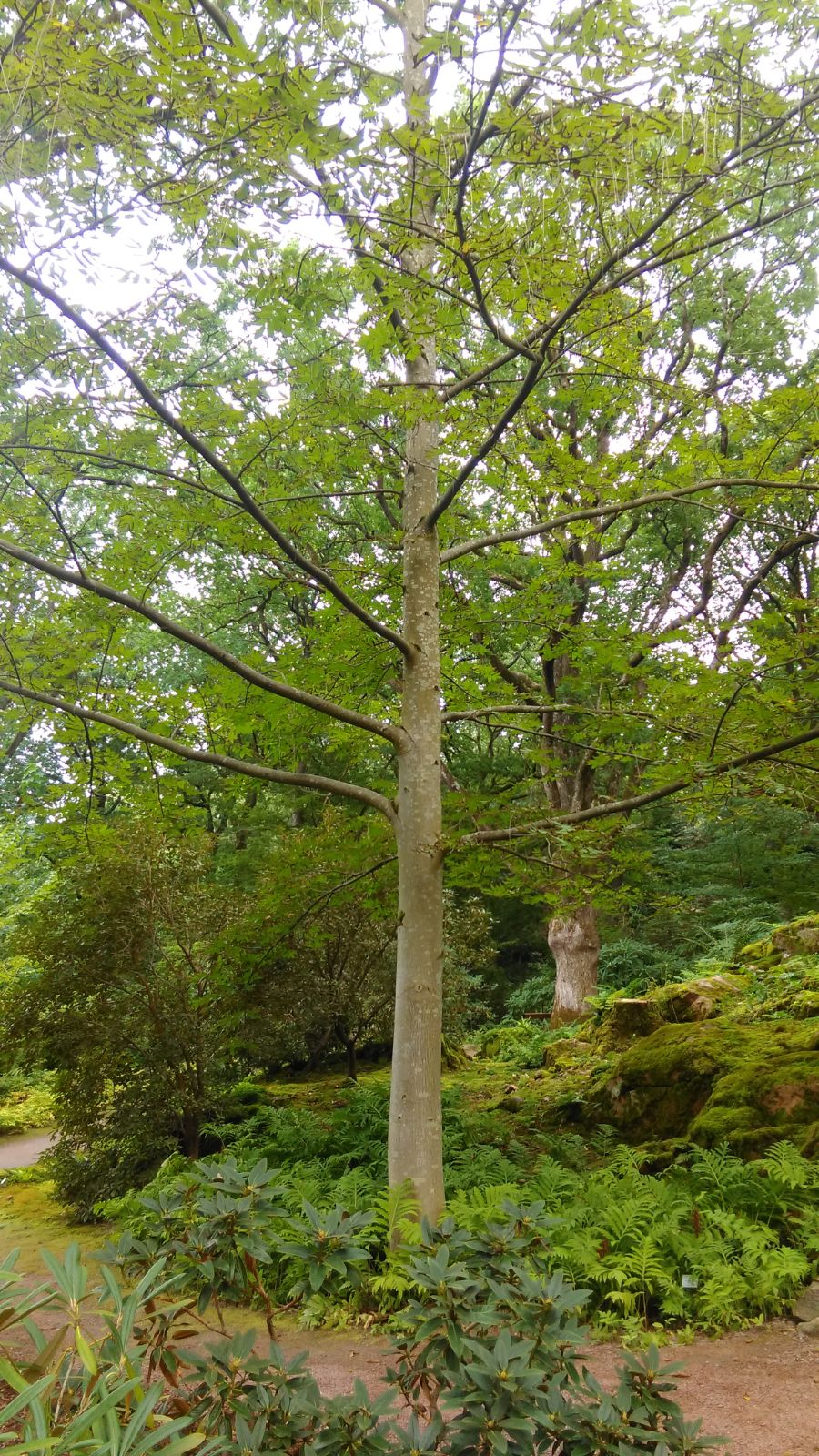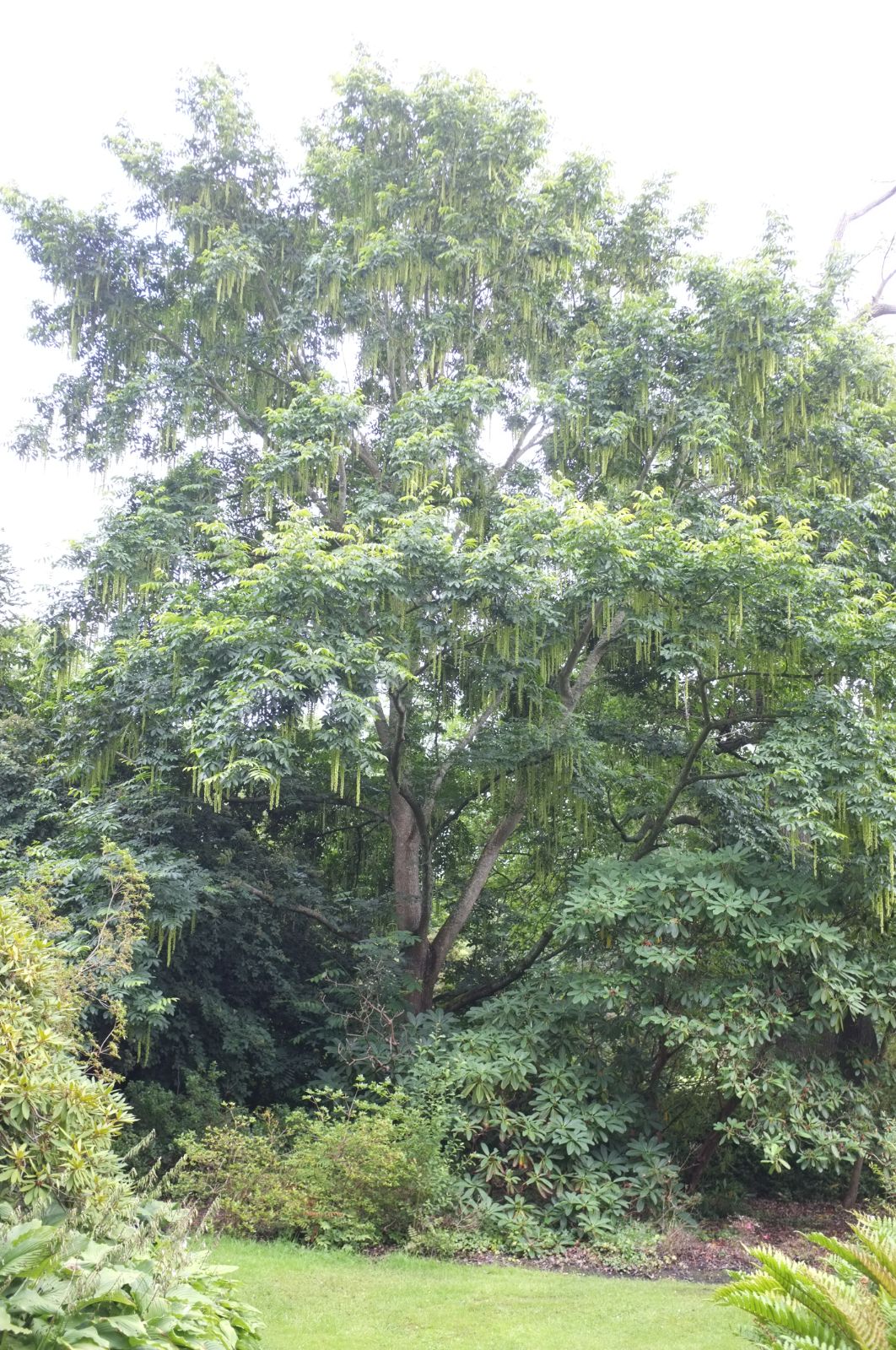Pterocarya hupehensis
Sponsor
Kindly sponsored by
a member of the International Dendrology Society
Credits
Julian Sutton (2019)
Recommended citation
Sutton, J. (2019), 'Pterocarya hupehensis' from the website Trees and Shrubs Online (treesandshrubsonline.
Genus
Common Names
- Hubei Wingnut
- hu bei feng yan
Large tree to 20 m, with pale grey, fissured bark. Branchlets minutely glandular, buds oblong, naked. Leaves imparipinnate, 12–30 cm long with glabrous, 5–7 cm petioles. Rachis wingless, glabrous. Leaflets (3–)5–11(–15) with petiolule to 2 mm, long elliptic to ovate-elliptic, 8–12 × 3.5–5 cm, obliquely rounded at base, shortly acuminate, margins serrate; glabrous above, tufts of brownish-downy hairs in the vein axils beneath. Male catkin 6–10 cm, female catkin 14–25 cm in flower, 30–45 cm in fruit. Nutlets subglobose, slightly ribbed, 7–8 mm in diameter, with broad, elliptic-ovate wings (1–1.5 × 1.2–1.5 cm). Flower April–May, fruit August (China). (Bean 1976; Huxley et al.1992; Lu et al.1999; Kozlowski et al. 2018).
Distribution China S Gansu, N Guizhou, SW Henan, W Hubei, S Shaanxi, W Sichuan; perhaps also in mountains of eastern China
Habitat Riverbanks in moist forests; 700–2000 m.
USDA Hardiness Zone 5-8
RHS Hardiness Rating H5
Conservation status Not evaluated (NE)
The distribution of Hubei Wingnut in central China appears reasonably wide when plotted on a map, but this represents perhaps 100 populations typically comprising less than fifty individuals. In addition to its rarity, it faces threats from low rates of seedling recruitment, and habitat degradation. It is a streamside plant, often growing in association with other relict species such as Davidia involucrata and Zelkova sinensis (Kozlowski et al. 2018). Bean (1976) notes its similarity to the more familiar West Asian P. fraxinifolia, and phylogenetic work gives some support to the idea that these two species are closely related (Mostajeran et al. 2017).
Pterocarya hupehensis was described in 1899 by the Kew botanist Sidney Skan, from material collected in Hubei by Augustine Henry in 1888 (Bean 1976). The specific epithet refers to this origin (the name of the province is romanised as Hubei using pinyin, but as Hupeh on the Wade-Giles system, formerly favoured). Seed was collected by Ernest Wilson for the Veitch Nursery in 1901 (Wilson (Veitch Expedition) 905). Another early collection was made in 1920 for the Arnold Arboretum by the Belgian railway engineer Joseph Hers; the locality is not recorded (Arnold Arboretum 2019), but Hers was based in Henan Province at the time. The species was collected again in the 1990s from Sichuan (SICH 1731) and by the 2018 North America – China Plant Exploration Consortium expedition, in western Hubei (NACPEC 18–092).
This is a rare tree in cultivation. The largest specimen in the British Isles, planted in 1916 at NBG Glasnevin, Dublin, was measured at 17 m × 54 cm in 2012; two 20 year-old trees from SICH 1731 at Howick Hall had reached 10 m in 2019 (The Tree Register 2019). A tree at the Gothenburg Botanic Garden, Sweden, (accession 1989–0025/1) was c. 15 m tall in 2018 and has formed a handsome single-stemmed tree, suggestive perhaps of greater cold-hardiness than might be expected (T. Christian pers. comm. 2019). In North America a tree survives at the Arnold Arboretum from the Hers collection, 51 cm dbh in 2016 (Arnold Arboretum 2019). Material of Shaanxi provenance is recorded at the Morton Arboretum, Illinois, planted in 1992 (Morton Arboretum 2019). While the light grey bark of this species is attractive and distinctive, its potential as an ornamental tree has scarcely been explored.

